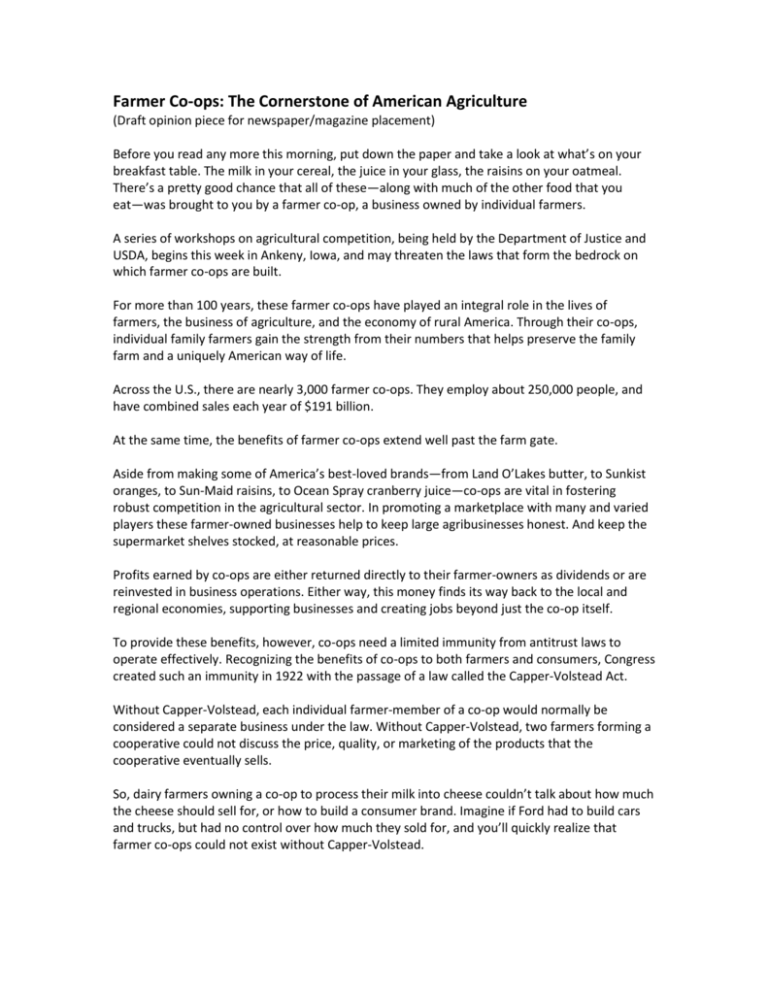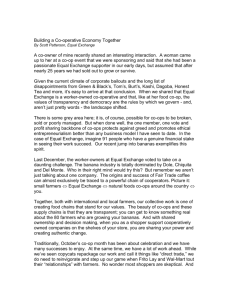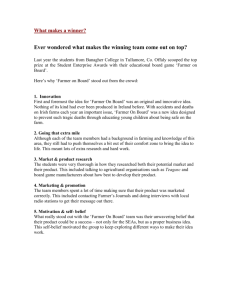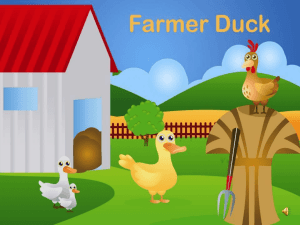Farmer Co-ops: Cornerstone of American Agriculture
advertisement

Farmer Co-ops: The Cornerstone of American Agriculture (Draft opinion piece for newspaper/magazine placement) Before you read any more this morning, put down the paper and take a look at what’s on your breakfast table. The milk in your cereal, the juice in your glass, the raisins on your oatmeal. There’s a pretty good chance that all of these—along with much of the other food that you eat—was brought to you by a farmer co-op, a business owned by individual farmers. A series of workshops on agricultural competition, being held by the Department of Justice and USDA, begins this week in Ankeny, Iowa, and may threaten the laws that form the bedrock on which farmer co-ops are built. For more than 100 years, these farmer co-ops have played an integral role in the lives of farmers, the business of agriculture, and the economy of rural America. Through their co-ops, individual family farmers gain the strength from their numbers that helps preserve the family farm and a uniquely American way of life. Across the U.S., there are nearly 3,000 farmer co-ops. They employ about 250,000 people, and have combined sales each year of $191 billion. At the same time, the benefits of farmer co-ops extend well past the farm gate. Aside from making some of America’s best-loved brands—from Land O’Lakes butter, to Sunkist oranges, to Sun-Maid raisins, to Ocean Spray cranberry juice—co-ops are vital in fostering robust competition in the agricultural sector. In promoting a marketplace with many and varied players these farmer-owned businesses help to keep large agribusinesses honest. And keep the supermarket shelves stocked, at reasonable prices. Profits earned by co-ops are either returned directly to their farmer-owners as dividends or are reinvested in business operations. Either way, this money finds its way back to the local and regional economies, supporting businesses and creating jobs beyond just the co-op itself. To provide these benefits, however, co-ops need a limited immunity from antitrust laws to operate effectively. Recognizing the benefits of co-ops to both farmers and consumers, Congress created such an immunity in 1922 with the passage of a law called the Capper-Volstead Act. Without Capper-Volstead, each individual farmer-member of a co-op would normally be considered a separate business under the law. Without Capper-Volstead, two farmers forming a cooperative could not discuss the price, quality, or marketing of the products that the cooperative eventually sells. So, dairy farmers owning a co-op to process their milk into cheese couldn’t talk about how much the cheese should sell for, or how to build a consumer brand. Imagine if Ford had to build cars and trucks, but had no control over how much they sold for, and you’ll quickly realize that farmer co-ops could not exist without Capper-Volstead. We look forward to working with the Department of Justice over the course of the workshops to help them fully understand how farmer co-ops improve the competitive dynamics of agriculture. We need to remind them that without farmer co-ops, farmers would receive less money for the crops they produce, and consumers would pay more for the food that they buy. What seems like a threat, though, is also a prime opportunity for farmer co-ops and their members to tell the story of how they provide food, fiber, and fuel to millions of Americans and untold numbers of people around the globe. By sharing this story—one written by the dedication and hard work of our fathers and grandfathers—we hope to help you, consumers and beneficiaries of co-ops’ success, better understand the direct role that farmers, through their co-ops, have in the food you eat and the clothes that you wear.










